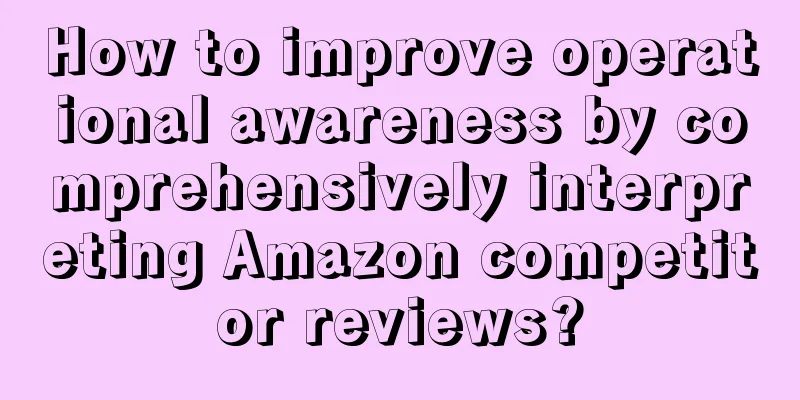When talking about Amazon product reviews, many sellers first think of brushing reviews, but the understanding of reviews should not be limited to this.
I have made a simple summary. In order to comprehensively improve our understanding of operations and reviews, we should at least include the following aspects:
Cognition 1: Review VS Sales
Although many sellers are engaged in fake orders, Amazon's anti-fraud system has been cracking down on and deleting fake reviews. Therefore, Reviews are, to a certain extent, feedback on sales.
Taking the US site as an example, based on past experience, the ratio of orders to reviews is about 130:1. That is, for most categories of products, if there is no human intervention or operation, it takes about 130 sales to receive a natural review.
The significance of knowing this number is that when we are doing sales evaluation, we can evaluate the sales of the product based on the number of Reviews. The number of reviews for a single listing can be used to estimate its approximate total sales volume, while the total number of reviews on the first 20 pages of search results can be used to estimate the market capacity of the product.
Taking the time factor into consideration, we can count the total number of reviews for a product in the last one, two, or three months, and roughly know the current market capacity of the product, which can provide a rough reference for our product selection.
Cognition 2: Review VS Customer Needs
Many sellers do not think deeply about a product when choosing it, and their functions, uses, application scenarios, etc. are vague. However, the consequence of being unprofessional is that they cannot sell well. If sellers can carefully read the reviews of competitor listings during the product selection stage, they can gain an understanding of the product from a broader perspective. At the same time, ordinary consumers often provide feedback and comments based on their actual usage results when leaving reviews. These comments can truly reflect the needs of users. If sellers collect and grasp the needs of users carefully, they can ensure that they are targeted in their operations and provide information for their later product upgrades.
Cognition 3: Review VS Product Quality
Product reviews can be good or bad. Consumers will stay away from products when they see bad reviews, but as a seller, you need to face the bad reviews and carefully read the bad reviews received by fellow sellers. Real bad reviews are feedback on user experience, while malicious bad reviews are a reflection of the competitive situation.
Through product reviews, we can confirm the status of our products in advance, transform and upgrade the products, and avoid the recurrence of negative feedback encountered by other sellers. Therefore, reading product reviews and upgrading products based on the reviews is an important way to improve product quality.
Cognition 4: Review VS Product Details Writing
By reading a large number of product reviews, we can grasp the advantages and disadvantages of the product as well as the needs and demands of users. If we can highlight the advantages, avoid the shortcomings, and reflect these contents in our own product details (including titles, five-element features, product descriptions, etc.), we can greatly improve the quality of our listings, thereby greatly increasing click-through rates and conversion rates. After all, for consumers, "the listing is the product itself."
So, based on the competitive product research principles that I emphasize in my daily incubation camp courses, I will assign you an assignment.
After a product is selected, select 20 peer listings with excellent performance, carefully read their product reviews, and write down the key points reflected in the reviews and use them in your own listing operations.

